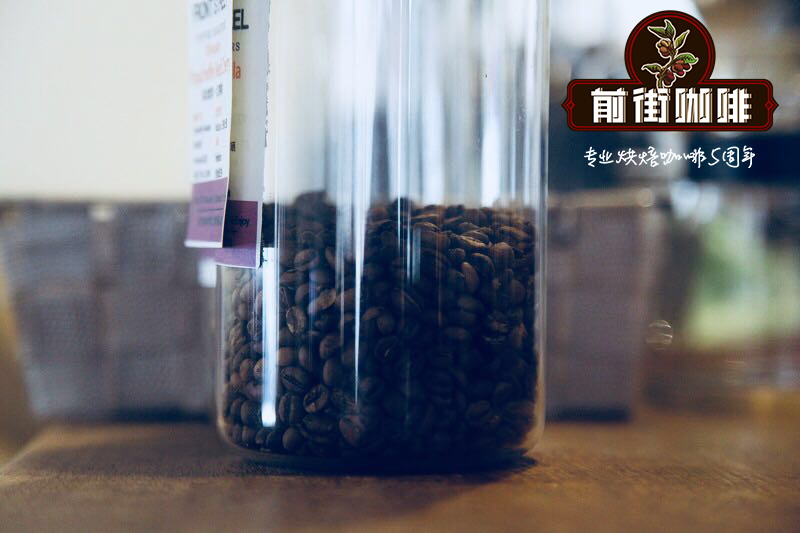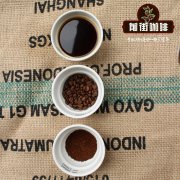Coffee Origin: history of Guatemala cultivation in Guatemala, reasons for changes in the course of rise and fall
Origin of coffee: Guatemala History of cultivation

The extra-hard coffee beans here are full, delicious and balanced, and the coffee brewed with them is pure and rich
Guatemala coffee once enjoyed a reputation as the best coffee in the world, but quality declined for a while. Happily, however, its popularity is gradually being restored.
In 1750, Father Jesuit introduced coffee trees to Guatemala, where German colonists developed the coffee industry in the late 19th century. Today, most of the coffee industry is produced in the south of the country. Here, the slopes of the Sierra Madre volcano provide ideal conditions for growing fine coffee beans, which grow at high altitudes. Critics prefer this blend of flavoured coffee with a spicy flavour to other types of coffee. The extra-hard coffee beans here are rare good coffee, it is full of particles, delicious, balanced acidity. Guatemala has also received attention for its giant coffee beans.
The coffee industry, which once prospered the country, still dominates the national economy. Unfortunately, however, the political situation at home is not conducive to coffee growers. High output is usually a sign of overall economic prosperity in a country. However, coffee production in Guatemala has now declined relatively, to only 700 kg/ha, compared with 900 kg/ha in El Salvador and a staggering 1700 kg/ha in Costa Rica. Guatemala coffee exports are controlled by private companies, but the National Coffee Council (Asociación Nacional de Cafe) controls other sectors of the coffee industry. Some of Guatemala's finest coffee is exported to Japan, where it sells for $3 to $4 a cup.
Most of the small-scale producers are descendants of Mayans, who like to be called locals. They are also currently benefiting from a US-funded program known locally as "The Project," which plans to invest $2.5 million to encourage small, high-quality coffee plantations. The main regions of Guatemala that produce high-quality coffee are Lake Atitlan and Huehuentenango. The aim of the project is to help break the vicious cycle of high production and low quality that has plagued the world coffee industry. Bourbon trees, for example, grow taller and produce fewer beans than the new dwarf trees, and although they are both Arabica varieties, Bourbon trees produce better beans and are more popular with foodies. The project also hopes to encourage local producers to process coffee beans themselves, since most coffee cherries are now sold to middlemen, and the value and even quality of coffee could be improved if it could be processed in local factories.
Antigua is also a famous coffee producer. Antigua coffee is produced at Hacienda Carmona, where the best quality coffee is EL Pulcal, which is not only of good quality, but also richer in flavor, taste and tobacco flavor than other coffees in Guatemala. Every 30 years or so, the area around Antigua is hit by a volcanic eruption, which provides more nitrogen to the already fertile land, and sufficient rainfall and sunshine make the area more suitable for growing coffee.
Other coffee producing areas include San Marco, Oriente & Coban, Palcya, Mataquescuintia and La Uman in Zacapa. The establishment of the Specialty Coffee Association means that the government of Guatemala is beginning to pay attention to high-quality coffee, and the efforts made for it will soon bear fruit.
Guatemala is Indian, meaning "wooded land," one of the ancient Indian Mayan cultural centers.
Guatemala national emblem has a long green, red, yellow tricolor colorful feathers and long tail feathers quetzal bird. Quetzal bird is the national bird of Guatemala, known as the "bird of freedom", according to legend in ancient times, it was India to join the worship of the "god bird", is regarded as a symbol of power. Quetzal bird temperament noble, love freedom, would rather die on hunger strike, also do not want to lose freedom. In 1524, the Spanish colonists invaded, the Indians rose up to resist, on the eve of the decisive battle, beautiful quetzals flew over the Indians and sang prayers for them, so that the morale of the Indian soldiers increased and the enemy was defeated at one stroke. Since then, the people of Guatemala have regarded the quetzal bird as a national pride. The quetzal bird stands on an unrolled scroll bearing the words "Freedom, September 15, 1821," symbolizing Guatemala's independence and freedom. Under the cross of the sword and bayonet rifle, cold flash, show the determination of the Guatemala people to defend the sovereignty and dignity of the country.
The country is divided into 22 provinces and 326 municipalities. The names of the departments are: Escuintla, Guatemala, Huehuetenango, Izabal, Jutiapa, Petén, Progreso, Quetzaltenango, Quiché, Chimaltenango, Retaluleu, Chiquimula, Jarapa, Sacatepec, San Marcos, Santa Rosa, Solola, Suchitpequez, Totonicapan, Alta Verapaz, Baja Verapaz and Zacapa.
Important Notice :
前街咖啡 FrontStreet Coffee has moved to new addredd:
FrontStreet Coffee Address: 315,Donghua East Road,GuangZhou
Tel:020 38364473
- Prev

Introduction of Saint Isabel Manor (Guatemala Santa Isabel) in Guatemala
Saint Isabel Manor (Guatemala Santa Isabel) in Guatemala introduces a. Tasting flavor: plum, caramel flavor b. Cup test results: the dry aroma shows toast, dark chocolate and a hint of cream, while the wet aroma still has dark chocolate and faint milk sugar; the texture (body) is more obvious after slightly cooling, but in the aftertaste.
- Next

Coffee origin: what are the producing areas of Guatemala in Guatemala?
Coffee origin: what are the producing areas of Guatemala in Guatemala? The extra-hard coffee beans here are full-grained, delicious and balanced, and the pure Guatemala coffee once enjoyed a reputation as the best quality coffee in the world, but its quality also declined for a time. What is gratifying, however, is that its reputation is gradually being restored. In 1750, Jes
Related
- Detailed explanation of Jadeite planting Land in Panamanian Jadeite Manor introduction to the grading system of Jadeite competitive bidding, Red bid, Green bid and Rose Summer
- Story of Coffee planting in Brenka region of Costa Rica Stonehenge Manor anaerobic heavy honey treatment of flavor mouth
- What's on the barrel of Blue Mountain Coffee beans?
- Can American coffee also pull flowers? How to use hot American style to pull out a good-looking pattern?
- Can you make a cold extract with coffee beans? What is the right proportion for cold-extracted coffee formula?
- Indonesian PWN Gold Mandrine Coffee Origin Features Flavor How to Chong? Mandolin coffee is American.
- A brief introduction to the flavor characteristics of Brazilian yellow bourbon coffee beans
- What is the effect of different water quality on the flavor of cold-extracted coffee? What kind of water is best for brewing coffee?
- Why do you think of Rose Summer whenever you mention Panamanian coffee?
- Introduction to the characteristics of authentic blue mountain coffee bean producing areas? What is the CIB Coffee Authority in Jamaica?

